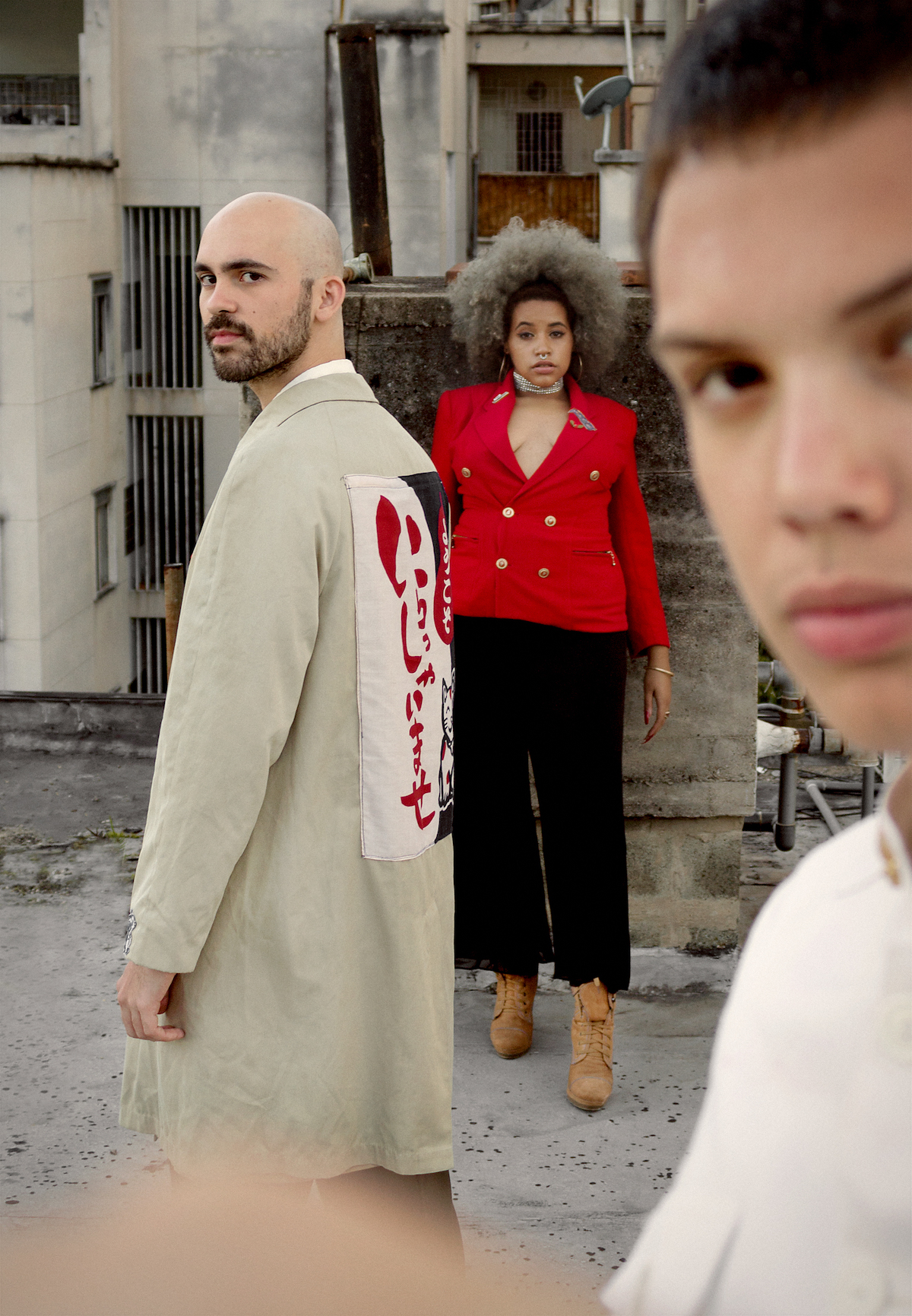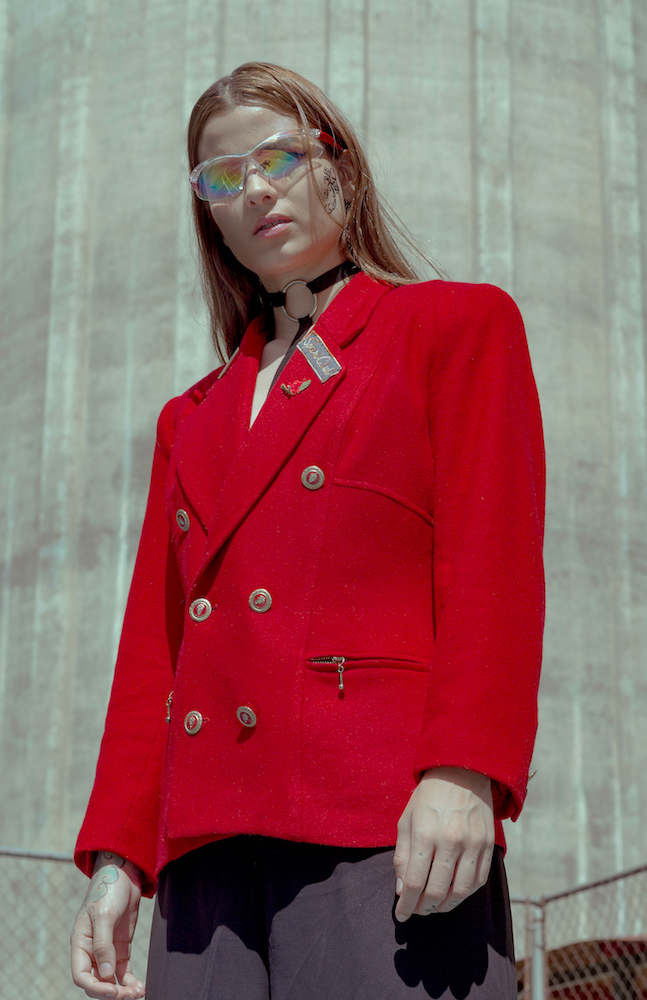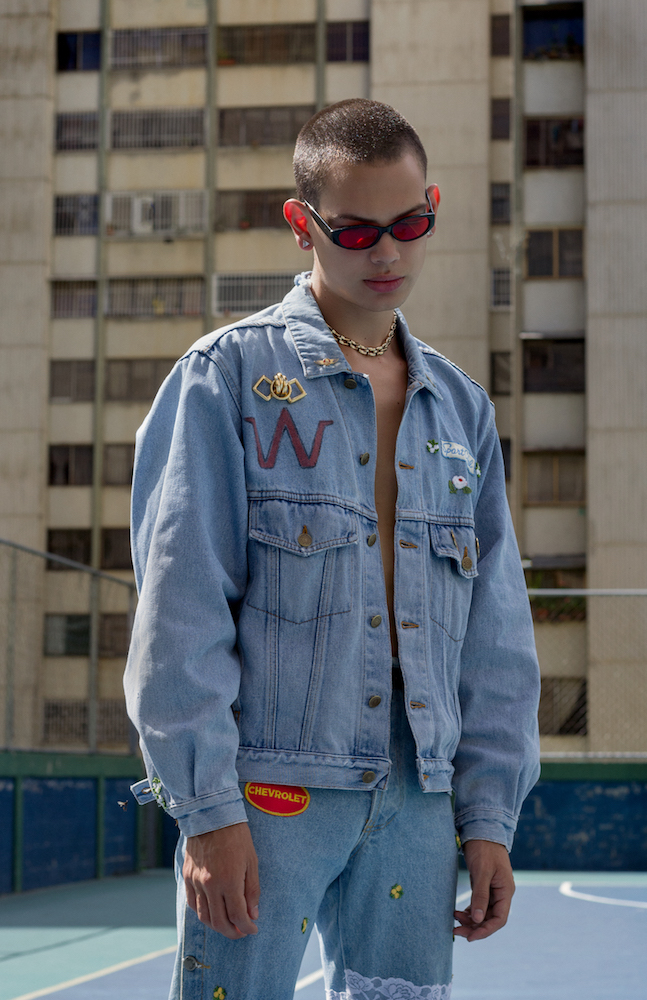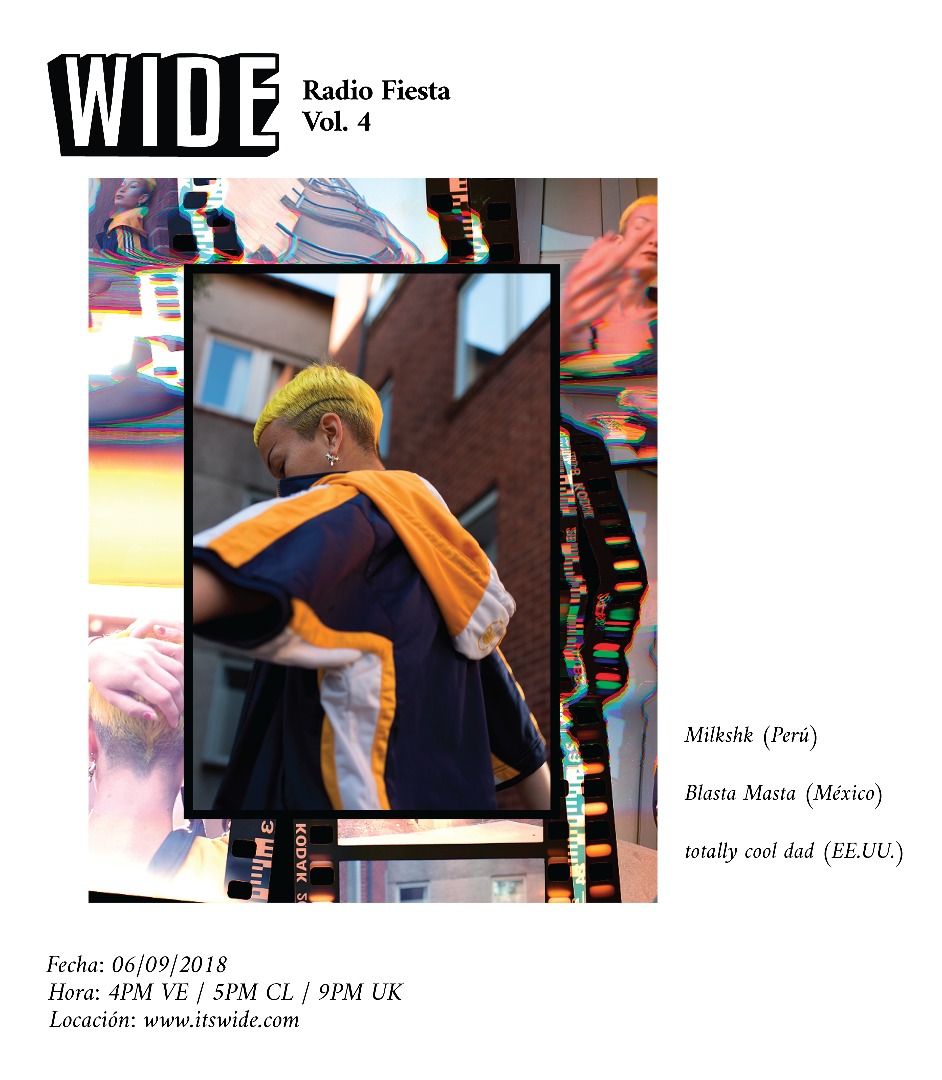Fashion, music, photography and bodies: the asymmetric, heterogeneous world of Wolfgang 95

Photography and music make very different uses of time. The assembly of an attire is a step-by-step process, but its result would seem to posses a certain constance, or to be affixed in time – in a photograph – unless we observe as the fine garments get lost in the night and come back the next day, proper hammered: few remain unharmed, or they’re removed from the body with with the same time and effort (maybe delight?) that they were put on. Like music: that goes from point A to point B in time, even if the composition evokes only one feeling.
Luckily, when making an aesthetic reading into shapes, contexts and artistic productions, the two processes may coexist: time may flow or stand still, antagonic ideas come together in a texture that is strange, but pleasant to the touch. In this regard, we’ve been gifted a nice little playlist by the creatives behind the Wolfgang 95 apparel project.
Benjamín Lobo lays at a crossroads between art and design: he doesn’t intend to use the title of “designer” out of respect for the discipline’s techné. At the same time, he takes a defiant stance by considering his interventions like works of art, capable of standing on a museum (read: reaching as hight a stature), on catwalks (read: pose with elegance and sensuality) and on the dancefloor (also read: I’m fainting from the heat!).
Together with photographer Esteban Astudillo, he’s published a discreet catalog of his creations, with Benji as the painter and Esteban’s eye as the canvas, and they’ve garnered quite a tad of recognition, featuring on magazines with a taste for the under, indie and DIY like RARO Magazine.
Their work isn’t just trans-disciplinary, but (trans)cultural, performatic and gender savvy. A dialog between classic and punx: formal dress pieces with glimpses of skin at the cleavage along with baggy clothes and unpretentious casual shoes. In Venezuelan faces – with their interethnic features, singular geometries and attractively gruff expressions – there’s a conversation between mixed heritages, as well as mold-breaking masculinities and femininities which the outfits also discuss: a trashy denim set switches models and genders; then, when Benji poses wearing a skirt and a crop top, as Ana Cartaya looks back into the camera with a real serious stare: mischievous girly smiles and neck-tilting? Forgeddaboutit.
Finally, the crude suburban settings, relaxed and uncaring stances (the stares of friendly indifference, irreverent tranquility or self-absorbed distraction) subvert the catwalk atmosphere even though they remind us of it: beauty is revealed as magnificent and sovereign as usual, but not very self-serious. An authenticity pours out of the models, who recognize the artificiality of getting their picture taken, appearing alive, self-possessed, superlatively free and low key comfortable with being regarded. Nothing is immaculate, we’re presented a postmodern landscape where all that exists in the world lives without any separateness, inhabited by the animals of the age. Recyclable high fashion of adolescent disdain. An undecidedly warm or sleepy, cloudy day on the third world.

Wolfgang’s 95 is sort of an Original Soundtrack for their garments and photographs. A musical allusion to the universe where these outfits, bodies and identities live, allowing them to go beyond the Venezuelan context and overlap with different imaginary places: there’s the trashy queenlyness of Crystal Castles, Princess Nokia and Lana del Rey along with the ultraviolence of Nicolas Jaar, Superheroes and that Trent Reznor & Atticuss Ross collab. The longing sensuality of FKA Twigs and James Blake with the careless nocturnal cadences of Grimes and Massive Attack. The cherry on top is a little warning by Frank Ocean’s mom, reminding you that: When people become weed-heads they become sluggish, lazy, stupid and unconcerned. Sluggish, lazy, stupid and unconcerned. That’s all marijuana does to you, okay?
Article by: Dmitri Gronlund









